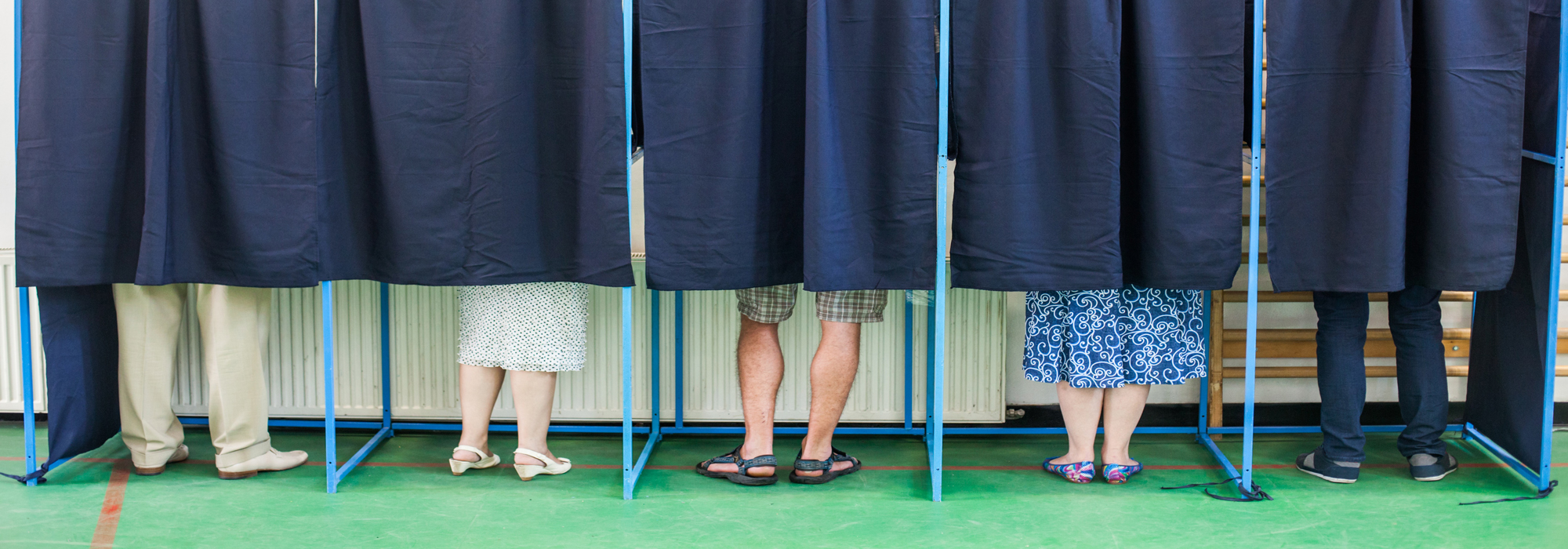
The country is engaged in a debate over the process and the eventual choice of a new electoral system. The Trudeau government is seeking to fulfill the Liberal election promise to replace the current first-past-the-post system before the 2019 federal election. Somewhat neglected in the debate so far has been the other Liberal promise, to consider the adoption of compulsory voting (CV) for future elections. The question of whether or not to adopt CV raises interesting philosophical, legal, political and administrative issues.
The main reason for considering compulsory voting is to increase the turnout rate in elections. There was an increased turnout in the October 2015 election, but turnout had been declining over several decades, with some rare exceptions. There is also the related concern that the voting population is not representative of society at large. Young adults, Indigenous peoples, less well-educated and lower-income citizens (these categories overlap) typically turnout in fewer numbers compared with other socio-economic groups. Low turnout is deemed unhealthy in a democracy because it leads to less legitimate, less responsive and less effective government.
The simplest and least costly way of increasing turnout would be to adopt a law requiring everyone to vote. In countries that have CV, its enforcement varies from being strict to being weak. Australia imposes modest fines on citizens who don’t turn up to vote, with exceptions made for those who have “valid and sufficient reasons.” Some countries use “shaming,” posting the names of nonvoters. Some research suggests compulsion helps make voting a cultural norm within some societies. CV laws require citizens to show up at the polls, but nothing prevents them from casting empty or spoiled ballots, perhaps as a protest against compulsion, or perhaps against the choices offered.
Over 20 countries have CV laws. Australia is the established democracy with the longest history of CV — theirs dates back to 1924. It is generally seen to have a sound democracy in which turnouts in national elections are routinely in the low 90 percent range (calculated based on enrolled voters, not the total eligible voting population). Compare this with Canadian turnouts from 1970 onward, which fell to the low 60 percent range (the lowest turnout in Canadian history was 58.8 percent, in the 2008 election). However, higher turnouts do not automatically lead to a vibrant democracy and good government. Egypt and the Democratic Republic of the Congo also have CV, and no one regards them as paragons of democratic virtue and good governance.
Compulsory voting versus individual liberty
On a philosophical and legal level, CV raises the question of whether requiring citizens to vote is an appropriate infringement on individual liberty, in the name of achieving certain collective benefits for society. If the Charter of Rights and Freedoms guarantees eligible citizens the right to vote, is there not an inverse right not to vote?
Proponents of CV argue against such an inverse right because there are presumed collective benefits of CV; for example, increasing the representativeness of the voting population, increasing the responsiveness of governments to previously disengaged voters, and building increased public support for the political system and government actions. Just as citizens are required to pay taxes and serve on juries, proponents of CV (including Liberal policy adviser Robert Asselin) argue that requiring them to vote to support a healthy democracy represents an appropriate obligation of citizenship.
Some critics of CV, meanwhile, say not voting is a form of political speech that sends a message about dissatisfaction with the political system or with the actors involved. Others still suggest that not voting may reflect a reasonable level of satisfaction or a rational calculation that the casting of one vote will make no difference on election outcomes and/or the direction of government policies.
A proponent of CV might respond that not voting is not an effective form of protest because the message being sent is unclear. He or she might suggest that dissatisfaction is really indifference, and citizens who do not vote have little sense of civic duty and make lame excuses such as they are too busy to vote. For people who are truly indifferent, voting may involve a minor inconvenience, but there is no great philosophical case for abstaining, since supposedly people who abstain do not care about the process.
Should all eligible Canadians vote in the first place?
Another critical perspective is that compulsory voting will bring politically ignorant voters to the polls in greater numbers. Poorly educated and inattentive voters, it is argued, are more susceptible to sensational advertising, including negative attack ads. Bringing apathetic and ill-informed voters to the polls may lead to “random” voting, which, the argument goes, counters the votes cast by the conscientious voters who make the effort to inform themselves about the issues and party stances.
There are several counter-arguments to this claim. First, voters may be ill informed but not necessary lacking in intelligence. Regardless of educational background and socio-economic status, most of us have trouble understanding the complexities of modern government. Second, under CV, parties would have to appeal beyond their narrow bases of support, and this may force them to make more serious efforts to engage all voters. Many people claim to be disgusted by the negativity of modern campaigns, and the parties’ need to broaden their base may lead them to become less mindlessly adversarial in their appeals to voters. Third, with guaranteed higher turnouts, parties would have to spend less on get-out-the-vote activities. This might lead them to focus less on fundraising and more on policy development.
Partisan self-interest
Any debate on electoral reform involves partisan calculations. In the case of adopting CV, there will be plenty of speculation about which political parties would benefit most. But assessing the impact of CV on the fortunes of different parties would be difficult, because there is a lack of reliable data on the issue. Intuitively one might assume that by bringing a higher percentage of lower socio-economic voters to the polls, CV might favour more left-of-centre parties that present progressive policies for economic and social reform. There is indeed some evidence that this can happen, but a lot would depend on the dynamics of party competition in a particular country, including the number of parties that are competing for public office. Also, parties would behave differently under CV, as they seek to broaden their appeal, so it is difficult to make unequivocal predictions from past experience that moving to CV would benefit one party more than the others.
There are also many practical legal and administrative questions related to the adoption of CV. Would it be introduced into the Constitution or the Canada Elections Act? What sorts of circumstances should qualify as a valid reason for not voting? What types of sanctions should be used to encourage compliance? If fines are used, should a court or some other public body adjudicate appeals of those fines? If there are fines, what should be the amount; should some groups (e.g., citizens who are disabled, ill or infirm) be exempt; and what should be done when people cannot afford or refuse to pay the fine? Should Elections Canada, or perhaps the Commissioner of Elections, be responsible for collection? Should revenues from fines be used to defray some of the expenses involved with administering elections?
Experience in countries with CV indicates that there will be a higher percentage of invalid votes. Whether this is a result of protest voting or a lack of understanding is not entirely clear. If the electoral system and the ballot format are new and complicated, the number of invalid votes would probably rise significantly. If Canada adopted CV there Elections Canada would have to conduct an extensive educational campaign (and its mandate would have to recognize this duty) in order to prepare its staff, political parties and candidates and, most importantly, the voters.
How low is too low for turnout?
Increasing turnout has been the primary aim of CV laws. From the experience of other countries, we know that turnout increases when CV is adopted. However, it is impossible to generalize with certainty about the percentage increase in turnout that would result from the adoption of CV. The two main factors that affect the size of the increase are the effectiveness of the CV model and the prevailing rate of turnout prior to its adoption.
In Canada the turnout (calculated as a percentage of eligible, registered voters, not the total eligible voting population) in the October 2015 election increased to 68.3 percent, the highest since 1993, when the turnout was 69.6 percent. Since Confederation, the median turnout in national elections has been in the 70 percent range. These percentages provoke the question: How low must the turnout be, over what period, to justify the use of compulsion?
In 2015, Barack Obama gave a speech calling for consideration of CV when the turnout in mid-term elections for Congress was only 38 percent. Is the legitimacy of the whole governing process fatally compromised when more people fail to vote than do vote? There has been a superiority complex in Canada that our turnout rates have always exceeded those in the US. However, we need to recognize that the Canadian percentages would be less flattering if the calculations were made based on all eligible voters, not just those who took the trouble to register.
In my judgment there is no compelling reason to adopt CV in Canada at this time. The simultaneous introduction of a new electoral system and CV would have both foreseen and unforeseen consequences. It would lead to voter confusion, which goes against public preference for an easily understood voting system that has a simple ballot format. If electoral reform happens, almost any system that replaces first-past-the-post will reduce the perception that certain votes are “wasted” because they do not contribute to the election of MPs. This in turn could bring up turnout slightly. Elections Canada could take further steps to encourage and facilitate voting, such as preregistration of young people approaching voting age, voting at any location in the country, automated voting at the polls and, eventually, on-line voting.
The objectives (official and unofficial) and the impacts of CV go beyond increased turnout. As with other types of electoral reform, political parties and their members will make self-interested calculations about whether CV will work to their advantage or disadvantage. If the choice of a new electoral system and the adoption of CV were seen to overwhelmingly favour one party (particularly the governing party), public support for the changes would be compromised. The cynicism toward politics and politicians could deepen.
Compulsory voting is not a panacea for what ails democracy. Even in established democracies that operate under CV, the levels of public disillusionment with the political process are comparable with the level in Canada today. Instead, political parties and their candidates need to give Canadians more reasons to pay attention to public affairs, and more reasons to vote.
Photo: Alexandru Nika / Shutterstock.com
This article is part of the Electoral Reform special feature.
Do you have something to say about the article you just read? Be part of the Policy Options discussion, and send in your own submission. Here is a link on how to do it. | Souhaitez-vous réagir à cet article ? Joignez-vous aux débats d’Options politiques et soumettez-nous votre texte en suivant ces directives.






